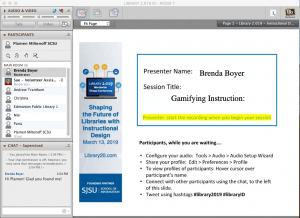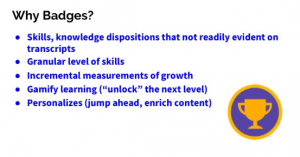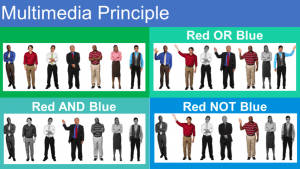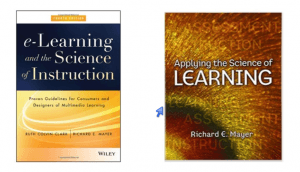Abrizah, A., Inuwa, S., & Afiqah-Izzati, N. (2016). Systematic Literature Review Informing LIS Professionals on Embedding Librarianship Roles.
Journal of Academic Librarianship,
42(6), 636–643.
https://doi.org/10.1016/j.acalib.2016.08.010
identifies and documents embedding librarianship roles as reported in the Library and Information Science (LIS) literature.
Findings The roles of embedded librarians were identified, especially in the context of service delivery, all of which reported to be applied to academic libraries. Information literacy instruction, research and other scholarly activities, distance and online learning as well as embedding in classrooms, were described as ways of ensuring successful embedding librarianship. Implications The roles reported in the literature should inform practicing librarians contemplating embedding practices, guide formal embedded librarianship programs, and encourage other librarians to consider new skills in support of embedding roles.
p. 637 The idea behind EL model is to demonstrate librarians’ expertise asinformation specialists and to apply this expertise in ways that willhave a direct and deep impact on the research, teaching or otherworks being done (Carlson & Kneale, 2011).Carlson and Kneale(2011)pointed out that as librarians seek to redefine themselves, themodel of EL is generating interest as an effectual way of applying theknowledge and skills of librarians towards the information challengesof the digital age.
Faculty collaboration with the embedded librarian is the core of em-bedded information literacy instruction. Faculty-librarian relationshipbuilding is of great significance because the two must work closely to-gether over an extended period of time, it is essential that librarianschoose their partnership carefully. Several librarians stress the need towork only in partnerships where there is trust and mutual respect(Carncross, 2013). Librarians build these relationships in differentways, while collaborative relationship can be built in numerous ways,it is essential that bothparties have common goals and know the impor-tance of developing information literacy skills in their students. The most significant collaboration are from campuses in which librarian and university administrators have made information literacy a priority on campus, and have provided librarians and faculty with the time re-quired to make the collaboration successful (Cramer, 2013).
The embedded librarian is focused on course goals and learning objectives outside of the library and across the curriculum
The review designates that EL in courses, classrooms and depart-ments see librarians conducting the following specific tasks: teach stu-dents how to be savvy searchers using computer and laptops (Boyer,2015); collaborate where librarian and faculty member teach eachother, exchanging favors, and the librarian selecting useful resourcesfor the faculty (Ivey, 2003); take part in meetings to promote librarian’spresence and establish communication with the students, researchersand faculty (Jacobs, 2010); provide access to course-related library re-sources, in-class instruction sessions, library instructional handouts, in-formation on referencing style, library Webinar information as well asteach note-taking (Bezet, 2013).
The review shows that academic libraries that engage their distancelearning communities through an embedded librarian as online co-instructors to deliver technological applications such as instant messag-ing, e-mail, and wikis. This EL model facilitates direct interaction be-tween students and librarians regardless of physical proximity.Edwards and Black (2012)andEdwards et al. (2010)evaluated the pro-gram of embedded librarians in an online graduate educational technol-ogy course and found that students were helped with their onlineassignments.
+++++++++
more on embedded librarianship in this IMS blog
https://blog.stcloudstate.edu/ims?s=embedded
Library 2.019 virtual mini-conference, “Shaping the Future of Libraries with Instructional Design
Wednesday, March 13th, from 12:00 – 3:00 pm US Pacific Daylight Time (click https://www.timeanddate.com/worldclock/fixedtime.html?msg=Library+2.019+ID&iso=20190313T12&p1=283&ah=3 to see in your local time zone).
Here are the links to the recordings of the sessions:
https://www.library20.com/page/recordings-id (you must be logged in)
This is a free event, thanks to our founding conference sponsor: School of Information at San José State University.
ATTENDING: We will send links for attending the conference a day or two before the event.
If you have friends or colleagues that wish to attend, this is a free event and we encourage you to share our information widely. However, please send them to the conference registration page (https://www.library20.com/instructionaldesign) rather than giving them the above link directly as it will allow us to track participation.
https://www.library20.com/instructionaldesign
https://www.library20.com/forum/categories/library-2-019-instructional-design-accepted-submissions/listForCategory
#library2019 #libraryid

Dana Bryant
Sandy Hirsch, SJSU School of Information.
Steven Bell, John Shank – integrating ID into practice. blended librarianship.
critical mass of librarians doing ID and libraries hiring IDs.
Michael Flierl
Assistant Professor of Library Science, Purdue University
Dana Bryant
Lead Instructional Technologist for Academic Technology Services, Woodruff Library, at Emory University
Lindsay O’Neill
Faculty, California State University, Fullerton’s Master of Science in Instructional Design and Technology Program
Steven J. Bell (moderator)
Associate University Librarian for Research and Instructional Services at Temple University
https://www.library20.com/page/library-2-0-schedule-gmt-4
What is ID: ID create an environment conductive to students’ success. Thoughtful and applied design. Making faculty and instructors’ life easier. Allow faculty to do what they do best.
Lindsey: solving the instructional problem with the tools at hand.
go-to ed tech? What is the hot tech right now?
Lindsey: H5P (open source) CC – licensed, Moodle, WordPress, build online tutorials for free (Isolde), Norway, well based, VR tours. Will H5P become paid? Michael: cell phones Dana: Emory VoiceThread. From the chat: Articulate365 (pricy), Kahoot, Peardeck, Yellowdig, vidgrid, Adobe Spark, Adobe POst, padlet, Groupme instead of Canvas, Vyond, Coggle, wakelet, Phinx
Suggestions for librarians who want to build ID skills. Dana: connect with the regional community if no ID on campus. Community of practice. Using ID tools, speakers outside of campus. Lindsey: teaching myself what is most interesting to me. what technologies are important. Find a learning community. Michael: repeat the others
keep up to date on ID theory and practices: Dana – ELI, OLC (Online Learning Consortium). ELearning Heroes. Lindsay: corporate word. Michael: POD
the one-shot instruction: what is the approach (q/n from the chat); Dana – ID as a services. person dedicated following up with people requested either ID class or training, open the line of communication. summative evaluation type of activity since we are failing to evaluate how well students absorbed the information. LIndsey: one-shot for basics (e.g. freshman), build scaffold program, reserved the one shot for meeting with librarians, for hands-on. Michael: work with faculty member and rewrite a program, build assessment rather then only deliver
areas of impact: subject matter librarians, working with faculty to use of the library resources, new faculty drawn in info and if not follow up, Canvas support. Michael: librarians and ID working directly with faculty rewriting their curricula, measure it, demonstrating library need, 3000 students – correlation. document the lib contribution to student learning directly, the teaching-learning culture change. using info and data in more authentic ways. Lindsey: disconnect the way librarian teach vs faculty teach. Coordination scaffolding.
q/n from the chat. easily. how can non ID librarian can easily implement ID type:
Lindsey: new to ID? Google. Jargon and Acronyms. re framing how you see ed technology. technology as something to get the job done. no need to get fancy.
Dana: same as Lindsey. But also learning theories and learning outcomes. From ID perspective: what they will come out with by the end of the session. action words.
Michael: mindset. what students want to learn, before what I will teach. backward design – understanding by design. UDL. Grab a friend and talk through.
Tara
ed tech is not getting job done:
clickers for attendance is horrible idea.
from the chat:
Dee Fink’s Taxonomy of Significant Learning1
https://www.byui.edu/outcomes-and-assessment-old/the-basics/step-1-articulate-outcomes/dee-finks-taxonomy-of-significant-learning
https://www.alt.ac.uk/
Association of Talent Development
Christy Tucker’s blog – Experiencing E-Learning
https://www.issotl.com/2019
https://e-learning.zeef.com/tracy.parish
https://www.lib.umich.edu/blogs/tiny-studies/using-pilot-study-test-and-assess-new-instruction-model
http://suny.edu/emtech
I had a really interesting role in grad school where we lived in the land between tech support and pedagogical / design support.
From Rajesh Kumar Das to All panelists and other attendees: (02:38 PM)
Good to hear from mike about affective learning. In this case, could you please focus what kind of technique is approprite for what, i.e. Didactic instruction, a low-complexity teaching technique such as a “Quiz Bowl”, or Jigsaw Method as high-complexity strategy, or both.
From Hailey W. to All panelists and other attendees: (02:36 PM)
As an ID librarian and the campus LMS administrator I struggle with getting them to see that other side of my role. That I’m not just “tech support”. Anyone else? Een jsut not being tech support?
From Vickie Kline to All panelists and other attendees: (02:44 PM)
As a librarian not formally trained in ID, I think a good entry point for exploring is Universal Design for Learning. We also need to pay attention to creating accessibility materials…
From Heather Quintero to All panelists and other attendees: (02:45 PM)
I always start with ADDIE… I am formally trained in ID and am an IT trainer for librarians. ADDIE is a framework for every class I make for both live and online classes. Don’t disregard ADDIE.
From Allison Rand to All panelists and other attendees: (02:47 PM)
The Wiggins and McTighe is a great book!
ADDIE Model
From Shane to All panelists and other attendees: (02:48 PM)
++SLIS open-source course on Instructional Design for Library Instruction
From Wendy to All panelists and other attendees: (02:49 PM)
Char Booth’s USER is also a very good model
http://www.modernlearning.com
https://web.mit.edu/jbelcher/www/TEALref/Crouch_Mazur.pdf
From Roberta (Robin) Sullivan to All panelists and other attendees: (02:53 PM)
@Rachel, Peggy, Shane – an open source course is available. Check out the SUNY’s Quality by Design (QbD): Strategies for Effective Teaching and Quality Course Design at: http://suny.edu/qbd This course is available as a facilitated version at least once each semester and as a self-paced non-facilitated version in Blackboard’s CourseSites. After completing the course requirements you can earn a Digital Badge to show your accomplishment.
From Naomi Toftness to All panelists and other attendees: (02:55 PM)
Just heard the terms “deliberate innovation” vs. “desperate innovation” that totally speaks to my situation with wanting to adopt the new cool tech
++++++++++++++++++++++
 SESSION LINK – https://sas.elluminate.com/d.jnlp?sid=2008350&password=LIB2019IDPart7 — If the session link doesn’t work for you, please copy and paste into your browser.
SESSION LINK – https://sas.elluminate.com/d.jnlp?sid=2008350&password=LIB2019IDPart7 — If the session link doesn’t work for you, please copy and paste into your browser.
Session Title: Gamifying Instruction: Breakouts and Badges!
Your Name and Title: Dr. Brenda Boyer, Librarian & Instructor
Your Library, School, or Organization Name: Kutztown Sr. High School, Rutgers University
Your Twitter Handle (@name): @bsboyer
Name(s) of Co-Presenter(s): Brenda Boyer
Area of the World from Which You Will Present: Kutztown, PA
Language in Which You Will Present: English
Target Audience: Instructional Design Librarians
Short Session Description: Build engagement for your online library instruction using LMS features, Breakout boxes, and digital badges.
Session Strand (use the “tag”): {Session Strand (use the “tag”):}
Full Session Description: It’s time to amp up your library instruction! Gamifying instruction in research skills such as database usage, advanced searching, & more can increase engagement and drive independent learning for students of all ages. This session will describe how learning management system (LMS) features can be combined with digital microcredentials (i.e. badges) and breakout boxes to gamify instruction that can be otherwise deemed boring (for both the learners and the librarian!).
Link to Conference Site Session Proposal (full URL with http://): https://www.library20.com/forum/topics/gamifying-instruction-breakouts-and-badges
Other Websites / URLs Associated with Your Session:
Your Bio: Dr. Brenda Boyer is a librarian and instructional designer. She has developed online instruction for secondary learners in the Kutztown (PA) School District, as well as for graduate and professional development learners at Wilson College and Rutgers University. She designed and instructs the Rutgers graduate course, Learning Theory, Inquiry, & Instructional Design, and is a frequent presenter at AASL, Internet@Schools. She has published articles in School Library Journal, Teacher Librarian, and School Library Connection.
Email: boyer.brenda@gmail.com
notes from Brenda’s session:
are we getting the job done, is our instruction sticking, what evidence we do have?
differentiate: who is ready to do what” at what skill level? how to bring everybody up to speed?
3 elements of Digital Gamification: leverage LMS (set game levels); how digital badges are paired 3. using digital breakout boxes to push challenge, skills
each chat as prerequisite for the next. prerequisite in LMS. Each game level is module. completed with a quizz. if they pass the quiz, opens challenge.1. what is page (facts about a tool to learn about[ what the tool does, feature, etc.) 2. suppe rshort video tour (3 min max), talk about something unique 3. quick quiz (max 5 q/s from the intro page and video). pass the quiz (100 %) to unlock the challenge level. 4. challenge level. digital breakout box embedded in the LMS. breakout using Google Forms. various locks (words, letter, numbers)

Badges why?

 Badgr, Credly, iDoceo
Badgr, Credly, iDoceo
Breakout Boxes

++++++++++++++++++++++
SESSION LINK – https://sas.elluminate.com/d.jnlp?sid=2008350&password=LIB2019IDPart8 — If the session link doesn’t work for you, please copy and paste into your browser.
Session Title: Improving Library Tutorials: The Multimedia Design Principles
Your Name and Title: Darlene Aguilar, Instructional Design Librarian
Your Library, School, or Organization Name: Loyola Marymount University
Your Twitter Handle (@name): @DarleneA_ID
Name(s) of Co-Presenter(s):
Area of the World from Which You Will Present: Los Angeles, CA
Language in Which You Will Present: English
Target Audience: Reference and Instruction Librarians, Instructional Designers, Tutorial developers, Academic Librarians
Short Session Description: This session will review Mayer’s (2001) Multimedia Design Principles to help improve instructional modules, tutorials, and videos.
Session Strand (use the “tag”): {Session Strand (use the “tag”):}
Full Session Description: Librarians are creating more online modules, videos, and tutorials to teach information literacy skills. Whether designing instruction online or in-person, research-based instructional methods are required and learning Mayer’s Multimedia Design Principles is the best place to start. In this session, I will review essential prior-knowledge on image types and working memory. I will then show learners how to minimize cognitive overload using these 12 principles: multimedia, spatial contiguity, temporal contiguity, coherence, modality, redundancy, individual differences, signaling, pacing, concepts first, personalization, and human voice.
Link to Conference Site Session Proposal (full URL with http://): https://www.library20.com/forum/topics/improving-library-tutorials-the-multimedia-design-principles
Other Websites / URLs Associated with Your Session: https://linkedin.com/in/darlene-aguilar/
Your Bio: Darlene Aguilar is an Instructional Design Librarian at Loyola Marymount University where she designs and develops video tutorials and online modules on information literacy and library related topics. Additionally, she provides “best practices” training in instructional design to other LMU librarians. She graduated from the University of Southern California with a Master’s in Education for Learning Design and Technology and previously worked at LAUSD for 7 years. She strives to remove learning barriers that are embedded in instruction and curriculum and make learning accessible to all learners.
Email: darlene.aguilar@lmu.edu
notes from Darlene Aguilar session: spacial contiguity, temporal contiguity. Modality: animation + narration better then animation + text, redundancy: animation and narration then animation + narration + text



Vine, R. (2018). Realigning liaison with university priorities: Observations from ARL Liaison Institutes 2015–18.
College & Research Libraries News,
70(9).
https://doi.org/10.5860/crln.79.8.420
Rita Vine is head of faculty and student engagement at the University of Toronto Libraries, email:
rita.vine@utoronto.ca. In 2017–18, she was visiting program officer for the Reimaging Library Liaison initiative at the Association of Research Libraries.
The overarching goal of the institutes is to acknowledge a library’s primary traditional services (instruction, collections, reference) while challenging conventional thinking about what is needed for the future and how best to provide it. Exercises are designed to help librarians move from “what’s in it for the library” to “what’s in it for the university.”
Top ten observations
1. Liaison librarians would benefit from greater exposure to institutional research priorities at their university.
2. Liaisons find it easiest to engage in classroom support and access library resources. Research engagement is harder. Moving into new areas of engagement is challenging when faculty continue to see librarians as buyers of content or helpers of students.5 Liaisons experience little pressure from individual faculty to venture into new areas that have not been typically associated with libraries. If asked to engage in new areas, some liaisons find it intimidating to step outside of familiar roles to probe and advocate for new capabilities and services that faculty may not be ready to discuss, or which liaisons may not yet fully understand.
3. Liaisons are both eager and anxious about shifting their roles from service to engagement. Anxiety manifests itself in feeling inexpert or untrained in technical areas.
The need for training in many different and complex technical skills, like data numeracy, publishing practices, and research data management,
4. Many liaisons’ professional identity and value system revolves around disciplinarity, service, and openness, and less around outreach and impact.
5. Some liaisons see outreach and engagement as equivalent to advocacy, library “flag-waving,” and sometimes “not my job.” My note: as in “library degree is no less better the Ph.D., it is like a physicians degree.”
6. Finding time, space, and motivation to undertake deeper outreach is daunting to many liaisons. Liaisons were very reluctant to identify any current activities that could be terminated or reimagined in order to make time for new forms of engagement. Particularly in institutions where librarians enjoy faculty status, finding time to engage in personal research concerned liaisons more than finding time for outreach.
7. Liaisons want to deepen their relationships with faculty, but are unclear about ways to do this beyond sending an email and waiting.
8. Many liaisons are unclear about how their work intersects with that of functional specialists, and may need prompting to see opportunities for collaboration with them.
9. While liaisons place considerable value on traditional library services, they have difficulty articulating the value of those services when they put themselves in the shoes of their users. Groups struggled to find value in aspects of traditional services, but had little appetite for serious reconsideration of services that may have lost all or most of their value relative to the time and energy expended to deliver them.
10. For liaisons, teaming with others raises concerns about how teamwork translates into merit, promotion, and other tangible rewards. Liaisons wonder how the need for increased teaming and collaboration will impact their reward structure. My note: I read between the lines of this particular point: it is up to the administrator to become a leader!!! A leader can alleviate such individualistic concerns and raise the individuals to a team.
three recommendations for research libraries to consider to help their workforce move to a robust engagement and impact model.
- Foster more frequent and deeper communication between librarians and faculty to understand their research and teaching challenges. Many liaisons will not take even modest communications risks, such as engaging in conversations with faculty in areas where they feel inexpert, without strong but supportive management interventions (as per my note above).
- Find ways to help librarians use internal teaming and collaborations to solve university challenges. My note: Chris Kvaal, thank you for introducing me to the “hundred squirrels in one room” allegory. To find way to help librarians use internal teaming, librarians must be open to the mere idea of teaming.
- Increase liaison activity with non-departmentalized units on campus, which are often drivers of institutional initiatives and university priorities. Units such as institutional research services, teaching centers, and senior university offices can connect the library to high-level institutional projects and provide opportunities to engage more liaisons and functional specialists in these areas.
+++++++++++
more on blended librarian in this IMS blog
https://blog.stcloudstate.edu/ims?s=blended+librarian
more on embedded librarian in this IMS blog
https://blog.stcloudstate.edu/ims?s=embedded+librarian








